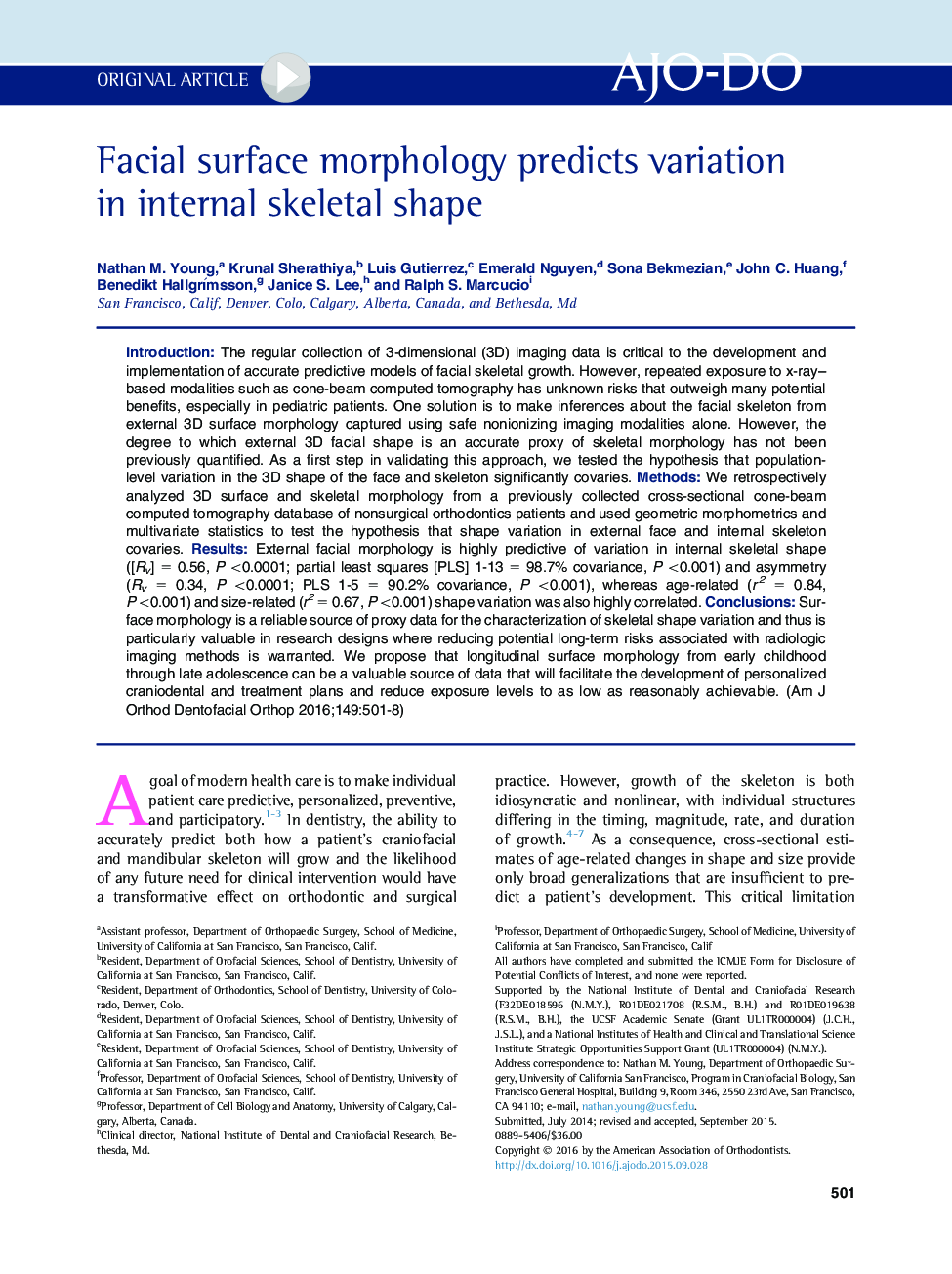| Article ID | Journal | Published Year | Pages | File Type |
|---|---|---|---|---|
| 3115481 | American Journal of Orthodontics and Dentofacial Orthopedics | 2016 | 8 Pages |
•We tested the relationship between variation in external facial morphology and internal skeletal shape.•The face predicts variation in shape, asymmetry, and associated growth parameters of the skeleton.•We speculate that standardized collection of facial surface morphology will contribute to generating accurate predictive models.
IntroductionThe regular collection of 3-dimensional (3D) imaging data is critical to the development and implementation of accurate predictive models of facial skeletal growth. However, repeated exposure to x-ray–based modalities such as cone-beam computed tomography has unknown risks that outweigh many potential benefits, especially in pediatric patients. One solution is to make inferences about the facial skeleton from external 3D surface morphology captured using safe nonionizing imaging modalities alone. However, the degree to which external 3D facial shape is an accurate proxy of skeletal morphology has not been previously quantified. As a first step in validating this approach, we tested the hypothesis that population-level variation in the 3D shape of the face and skeleton significantly covaries.MethodsWe retrospectively analyzed 3D surface and skeletal morphology from a previously collected cross-sectional cone-beam computed tomography database of nonsurgical orthodontics patients and used geometric morphometrics and multivariate statistics to test the hypothesis that shape variation in external face and internal skeleton covaries.ResultsExternal facial morphology is highly predictive of variation in internal skeletal shape ([Rv] = 0.56, P <0.0001; partial least squares [PLS] 1-13 = 98.7% covariance, P <0.001) and asymmetry (Rv = 0.34, P <0.0001; PLS 1-5 = 90.2% covariance, P <0.001), whereas age-related (r2 = 0.84, P <0.001) and size-related (r2 = 0.67, P <0.001) shape variation was also highly correlated.ConclusionsSurface morphology is a reliable source of proxy data for the characterization of skeletal shape variation and thus is particularly valuable in research designs where reducing potential long-term risks associated with radiologic imaging methods is warranted. We propose that longitudinal surface morphology from early childhood through late adolescence can be a valuable source of data that will facilitate the development of personalized craniodental and treatment plans and reduce exposure levels to as low as reasonably achievable.
